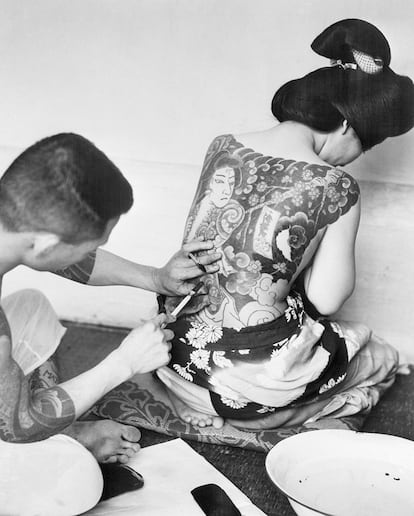He noir Japanese is a separate universe. Like so many other aspects of the Asian country, its authors reach us and with high fascination installments. There have been great successes among which we can cite the novels of Seicho Matsumoto (Tokyo’s express o Kyusu’s girlto name only two of those published by Books of the Asteroid), La Gore, too much for my liking, Miso soup, by Ryu Murakami (in bad land edition) and one of the great police of all time: 64by Hideo Yokoyama (Salamandra).
Today we bring you two good examples of gender diversity in Japan. They are also two classics that first arrive at the market in Spanish. And they cannot be more different. Pass and read.
Four criminal casesJunichiro Tanizaki (Satori, translation of Rumi Sato). It does not belong to the tribe of black authors but to that of the eternal candidates for the Nobel and that of the best Japanese writers of the twentieth century. Here Tanizaki (1886-1965) strives to deliver four stories that honor the genre in a very careful edition, a house brand. The result is unequal, but the bet is worth it. The first, The case of the yanagi bathroom (1918), he resorts to the unreliable narrator (a young man with mental problems that confesses a crime) and the framed narrative strategy (a narrator is witnessing the confession and is the one who opens and closes the story) but does not achieve the desired effects, at least for the reader who speaks to them. Perhaps it is because there is a crime, but it is more a horror story that does not finish curdling. The second, however, Along the way (1920) goes beyond the tribute to detective novels and the deductive world of Sherlock Holmes. He prepares a curious game: a researcher is going to look for a man who has to ask a series of questions about his life to certify his suitability to marry his girlfriend. It has been hired by the in -laws, and that explains the initial purpose. But in a brilliant way and with a character that unfolds to anyone, Tanizaki turns us around the matter and finds a path to get the story before a stunned reader. Of the third, The thief (1921), you can say little without gutting it, so we will stay with this: it advances several years to a solution found by teacher Agatha Christie for one of her best novels (although the story is not up to that). And the last, Devils in daylight (1918) is the most complex and interesting because the narrative fabric that encloses, the trap in which the protagonist falls and the final outcome are of great height. And, contrary to what happens with the first two, the main female character is not a mere ornament.
The mystery of the tattooed womanAkimitsu Takagi (Salamandra, Eduardo Hojman’s English translation). The Tokyo of 1947, a city razed and without hope, serves as a stage to this novel that drinks on the four sides of the spirit of the Western police classics (including some metaliterary references that fans will like a lot). With the traditional calm in the Japanese genre, the author immerses us first in the cult of tattoo as an excellent art (and prohibited at the time) through a woman, Kinue nomura, fascinating and dark in equal parts. The weight of the narrative is carried by Kenzo, a forensic doctor in love with Kinue and brother of Daiyu, one of the stars of the Tokyo Police as a investigator of the criminal brigade. A series of ritual murders related to tattoos unleashes the investigative action of the brothers and opens the door to the fascinating underworld. The pieces of the procedural (autopsies, interrogations, deductions of the researchers, etc.) are counted with precision and an incredible pulse, halfway between the best literature and the police report. How it includes the character to unbridled research and how it uses chess and go to discover the weaknesses of several suspects is original and fun. There are no big surprises, or spectacular turns, because it is not a novel of that style or needs it, but a constant rhythm that leads to an end according to all this artifact.
It is the first time that this 1948 classic arrives at Spanish bookstores. We expect more works from the genius Akimitsu Takagi.

